January 2025
Significant Weather Events:
January 2025 cannot be summarized without discussing the historic winter storm that troubled the Southeast United States. On the night of January 21st, frozen precipitation and snow began to fall in Southeast Texas. By the morning of the 22nd, there was a blanket of snow covering the ground from Southeast Texas to Southern Mississippi. In Southern Louisiana, snowfall totals were at least 8 inches in most areas with some places seeing upwards of 11 inches. This snow continued to cover the ground for several days and aided in setting new record low temperatures. Two metrics help us to understand the gravity of this storm. First, the National Weather Service office in Lake Charles, LA issued their first ever blizzard warning. Second, snowfall totals from this storm alone were enough to cause snowfall totals for multiple locations in Southern Louisiana to top those well to the north, such as some places in Alaska and Canada.
Additionally, this storm had a massive impact on travel. Multiple airports in the region closed as flights were canceled due to frozen precipitation. It took 4 days for roads to fully reopen in New Orleans. The agricultural impacts of this storm varied tremendously, mostly depending on the type of crop planted. While greens and field crops in Southeast Texas suffered, crawfish in Louisiana are expected to rebound fast as warmer temperatures remain in the forecast.
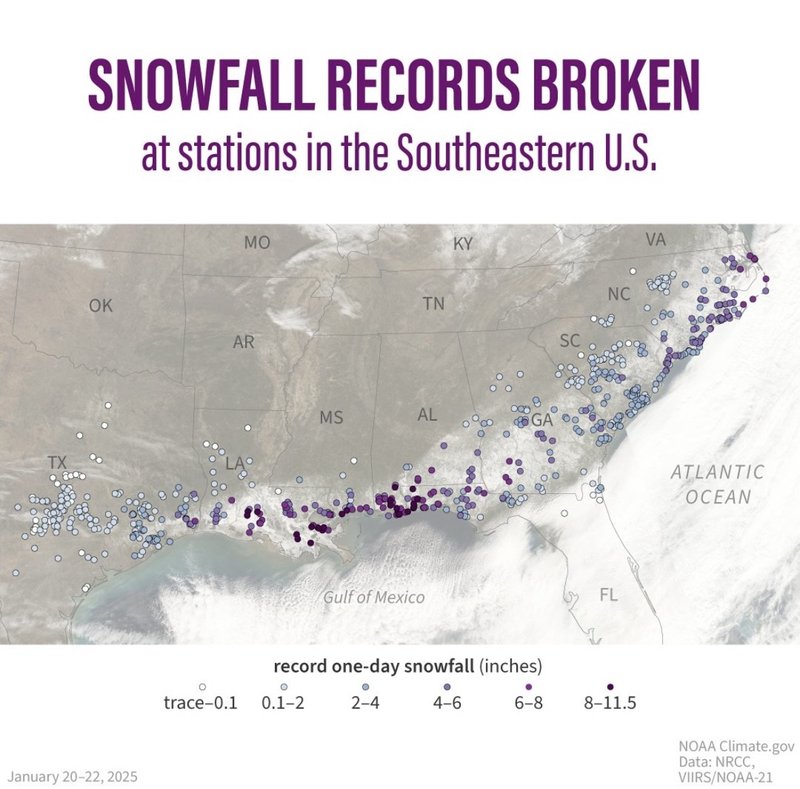
Temperature:
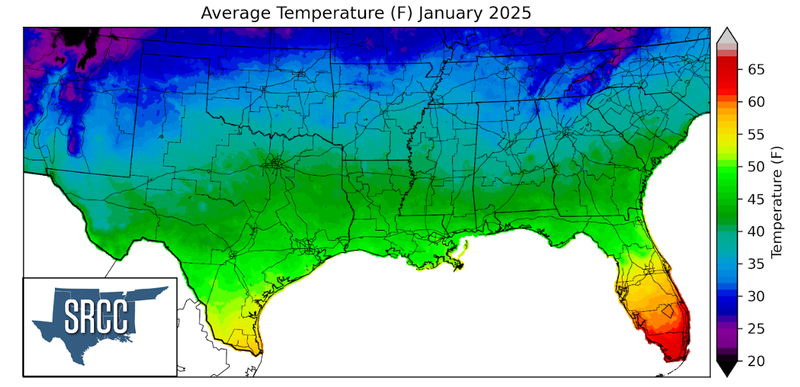
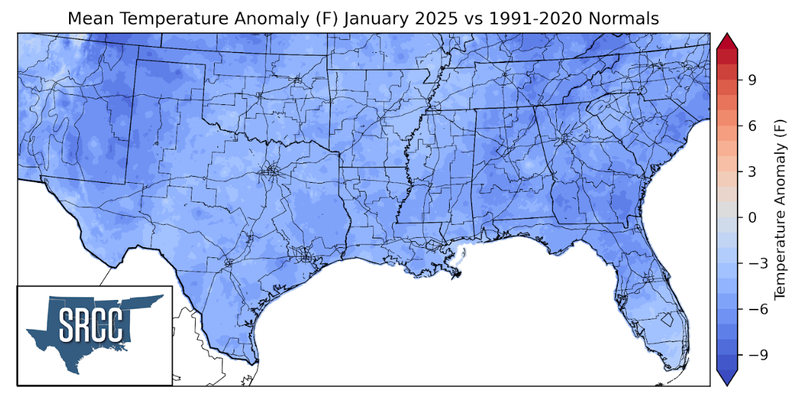
This January temperatures were below-normal across the Southern Region by about six degrees Fahrenheit. These below-average monthly temperatures can be traced back to the second and fourth full weeks of January. The second full week of January is when the Southern Region saw its first push of Arctic air into the area. This brought record-breaking cold temperatures; weekly average temperatures from January 5th - 11th were around 12 degrees below normal. More chilly temperatures came to the Southern Region on January 18th when a strong cold front brought down more Arctic air. This event was historic, resulting in temperatures in Southern Louisiana being colder than in Central Alaska! Temperature records were broken throughout the Southeast from this system. Weekly average temperatures in Southeast Louisiana were as much as 18 degrees below normal the week of January 19th. These two southward surges of Arctic air resulted in below-normal temperatures for January. At the beginning of the month, NOAA’s Climate Prediction Service declared a La Niña advisory, marking that La Niña conditions had been met. A typical La Niña winter brings warm conditions to the Southern United States. This has not been the case this January, although winter (December-February) in the Southern Region is still running slightly above normal. This La Niña is weak, meaning any teleconnections felt will likely be mild.
Precipitation:
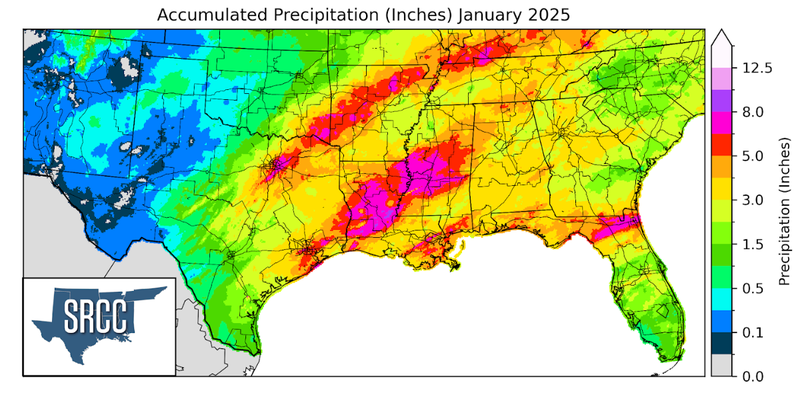
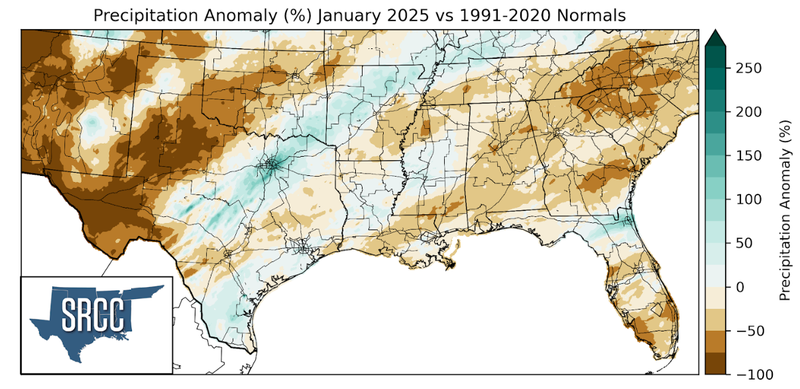
Precipitation totals varied across the Southern Region. From Central Texas east, widespread precipitation was observed. However, precipitation totals were below normal from Far West Texas into Central Oklahoma. Throughout the rest of the Region, precipitation totals hovered near normal. Monthly accumulations were their largest in Louisiana, Central Mississippi, and from the Dallas-Fort Worth Metroplex to Northeast Arkansas. Throughout these areas, precipitation totals ranged from five to eight inches. Much of the month's precipitation fell in the last week of the month when a low-pressure system brought warm and cold fronts along with substantial rain to the Region.
Drought:
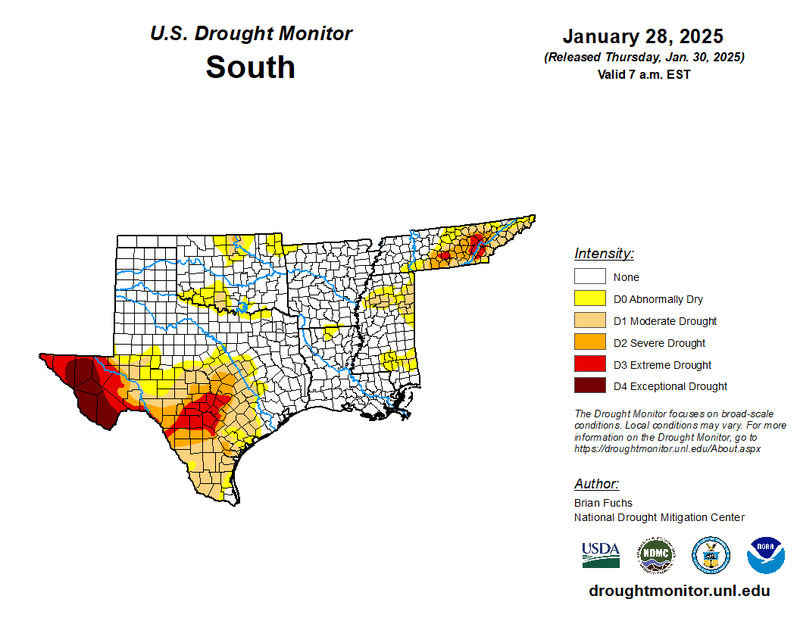
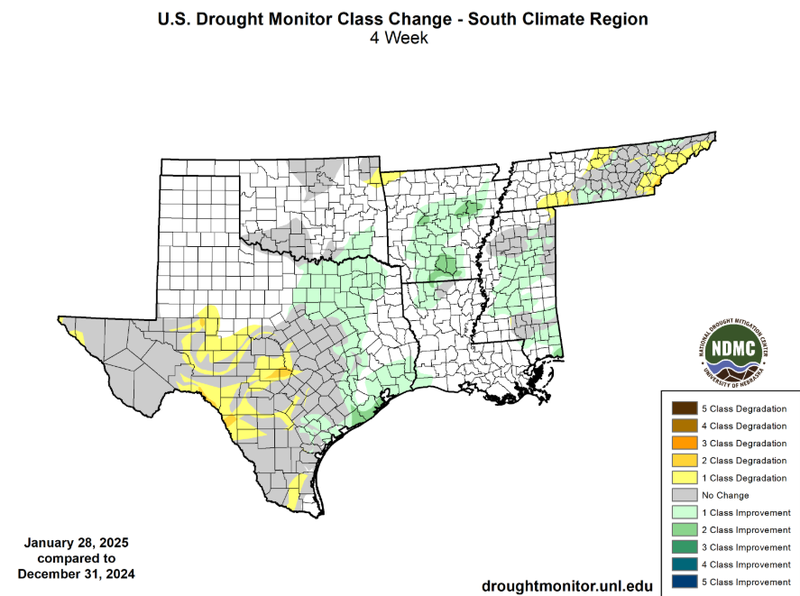
Conditions this January were chilly, with precipitation concentrated from Southeast Texas to Mississippi and areas in central Louisiana receiving the most rainfall. In addition, precipitation totals 2-5 inches above normal were observed from the Dallas-Fort Worth Metroplex northeast to the Red River. This precipitation resulted in widespread one-class improvements in North-Central Texas, Southeast Texas, and Central Mississippi. Additionally, one and isolated two-class improvements were made in Central Arkansas. These improvements led to the removal of drought status in the areas discussed. Unfortunately, several areas lacked significant precipitation in January, including Southwest Texas and areas of Tennessee. Dry conditions in these areas resulted in one-class degradations and drought intensification. At a regional level, drought contracted by 12% this January, but due to degradation in Texas and Tennessee severe drought at the regional level did increase by 2%.
According to the U.S. Monthly Drought Outlook for this February, drought is expected to remain yet improve in Central Tennessee. Drought is expected to persist in West Texas, South Texas, and Central Mississippi. Drought development is likely in areas of Southwest Texas. Finally, drought removal is likely in Northern Mississippi and Eastern Tennessee.
